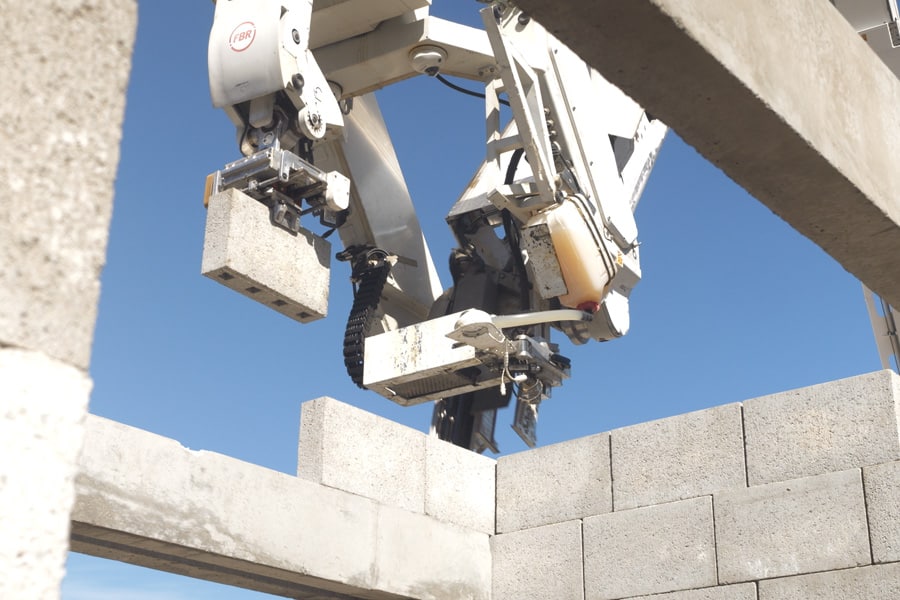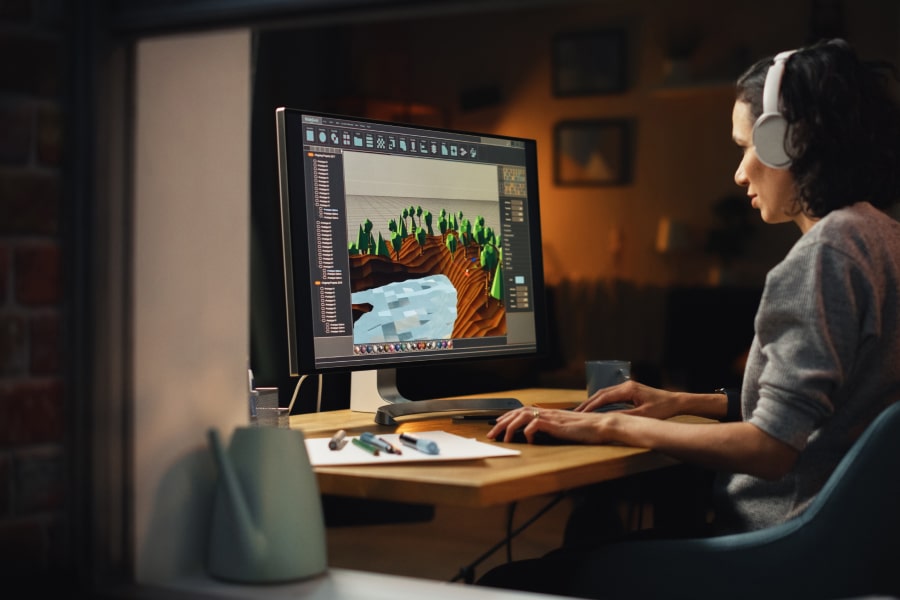When most reference robotics being the future of work, artificial intelligence immediately comes to mind. Creating everything from business plans to advertising taglines, AI’s use in the construction industry is growing—but what about physical applications of robotics?
Meet Hadrian X, a bricklaying robot that creator Mark Pivac believes has the potential to help skilled masons build houses faster and more efficiently than ever. Built spoke to Pivac about this invention and how robotics has the potential to make construction faster, greener and more economical.
Creativity in a building boom
With almost 30 years of experience using pro-level 3D CAD software, Pivac had worked extensively within the construction and design world before he came up with the idea that would become Hadrian X.
“The original idea was to create a very large optically stabilized CNC machine to mill epoxy filler smooth on big aluminum ships, superyachts and ferries,” Pivac said. “This merged with an idea to build very large wood patterns for the foundry industry by robotically gluing blocks together on a CNC machine. A building boom in Western Australia in 2005 triggered the notion to apply those concepts to robotic bricklaying.”
Faced with a market in need of rapid, efficient construction techniques, Pivac drew on his expertise as he got to work. “The development of all Hadrian robots started in 3D CAD, with all parts modeled and analyzed before physically building any robots,” he said. “Constructed robot prototypes have been extensively tested, both indoors and on construction sites, and then refined and iterated to make them faster, more reliable, easier to operate and further productive.”
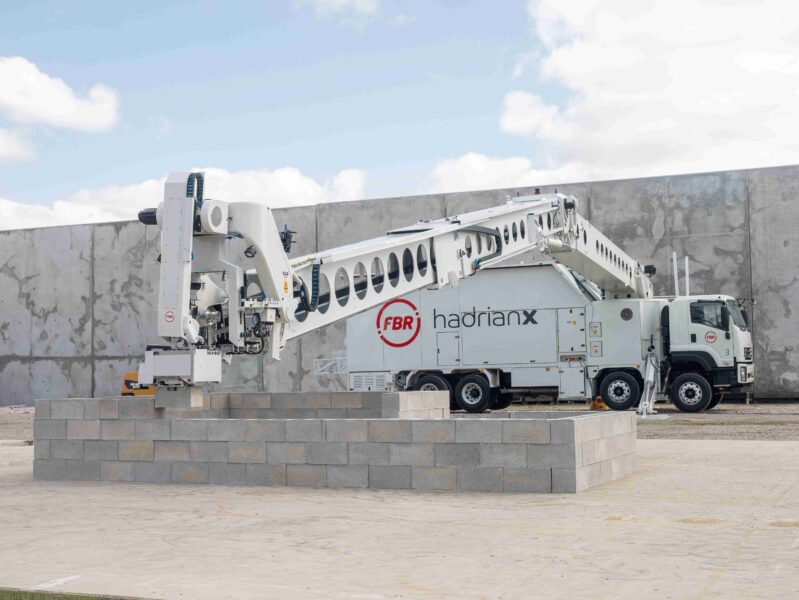
When the team moved into the creation stage, potential issues began to emerge that led them to further refine the concept for Hadrian. “The first Hadrian robot developed was a small pair of robots to prove out the concept of laying bricks and mortar with robotics,” Pivac said. “This highlighted issues such as using wet mortar with robots.”
Pivac and his team pivoted to a new concept before a global slowdown derailed its progress. “The next iteration was built on an excavator base and used adhesive to bond the blocks,” Pivac said. “This was almost mechanically complete by 2008, then the global financial crisis slowed progress.”
Although the team was forced to slow its work, Pivac said it remained undaunted, and Hadrian finished its first complete wall structure in 2016.
Curious why 3 million AECO professionals worldwide use Bluebeam to finish projects faster?
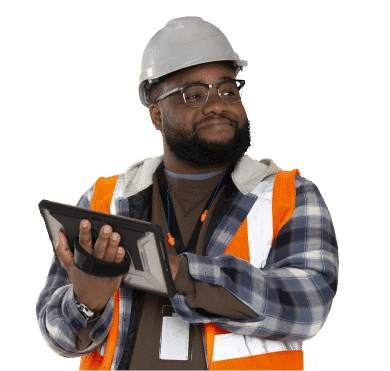
“This ‘technology demonstrator’ iteration was difficult to transport between construction sites and highlighted the need for rapid deployment with a truck-mounted robot,” Pivac said. “The following commercial prototypes of Hadrians were truck mounted and have been in service since 2018. The next-generation Hadrian X is faster and more reliable, with a greater boom reach and can handle much larger blocks—measuring up to 600mm x 400mm x 300mm and weighing up to 45kg.”
A closer look at Hadrian X
There are a number of unique things about Hadrian X, starting with the conditions it’s designed to be used in.
“Traditionally robotics has been used indoors in controlled, stable and static environments to perform repetitive tasks, such as car manufacturing,” Pivac said. “Outdoors, robots are exposed to unpredictable and continuously changing interference such as wind, vibrations, altering machine motions and thermal variation.”
The solution? Dynamic stabilization technology. “DST is a system for measuring dynamic interference and movement in real time and counteracting this movement to maintain stability and deliver unprecedented precision in variable conditions,” Pivac said. “It is the technology that allows the Hadrian X to place products with such precision through a 32-meter boom.”
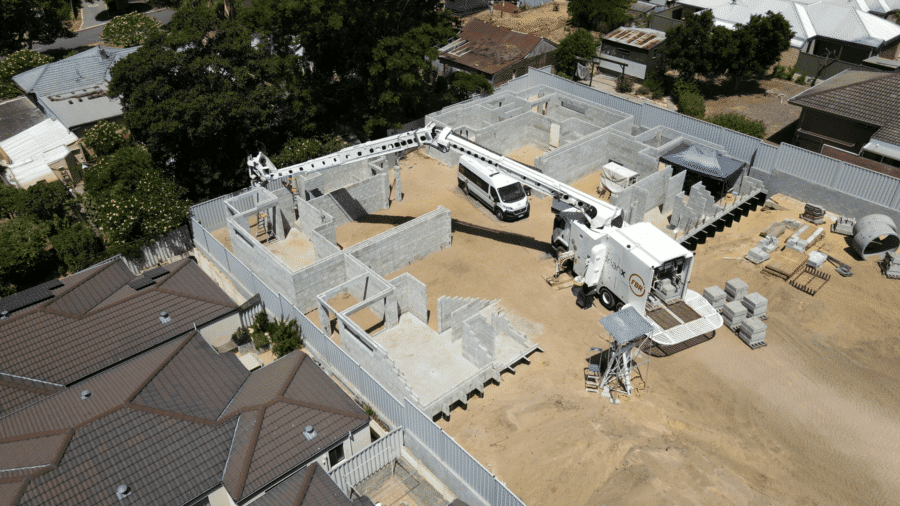
Pivac drew on his experience with 3D CAD to make Hadrian functional. “The Hadrian X shares some similarities with 3D concrete printing technology in terms of erecting structures from a 3D CAD model in a similar way to a CNC machine,” he said. “Except the Hadrian X is a fully mobile system with a long boom reach, and it can lay existing off-the-shelf blocks rather than a bespoke material, and the resulting structures are certified as meeting applicable building codes and standards.”
The result of all this technology is a system that Pivac said improves on traditional bricklaying techniques. “The Hadrian X builds block structures faster, safer, more accurately and with less waste than traditional manual methods, ultimately leading to lower construction costs,” he said. “It can also be a much more environmentally friendly way of producing block structures, as offcuts are reused, or it can lay blocks using sequenced pallets, so no on-site masonry waste is produced at all.”
This precise approach means that some construction work can also move off site where appropriate, leading to accelerated timelines.
“The precision of the Hadrian X enables offsite parallel manufacture of finishing items such as roof trusses and even prefabricated kitchens and bathrooms, and a homebuyer can move into their new home faster than ever before,” Pivac said. “The Hadrian X applies FBR’s unique and certified masonry construction adhesive to each block as it is laid, which cures in approximately 45 minutes and is much stronger than traditional mortar. This allows for continuous high-speed building without having to wait for mortar to dry, and has significant environmental benefits too.”
Hadrian X in action
When a Hadrian X deploys to a jobsite, two or three people come along, depending on the regulations in the jurisdiction where the construction is taking place, as well as the size and complexity of the job.
“Humans are still involved in the operation of the Hadrian X,” Pivac said. “Tasks include oversight of the initial build plans, site surveying, aspects of machine operation and any troubleshooting required, ensuring a collaborative approach to construction.”
“Being a robot, the Hadrian X can handle heavy, repetitive tasks such as block laying, potentially mitigating injury risks, which are common in the construction industry,” Pivac continued. “The Hadrian X is designed to lay structural masonry rather than specialized masonry or ‘face brick.’ In this sense, the Hadrian X complements human labor, as skilled masons are still required to complete intricate work.”
Despite fears that technology like Hadrian X will lead to human job loss, Pivac is optimistic about its potential to enhance existing construction jobs, making them easier, faster and more precise.
“The bricklayers of the future will use the Hadrian X as a tool, much the same as they use trowels and saws now,” Pivac said. “The Hadrian X is designed to improve the working conditions of bricklayers, allowing them to stay in the trade longer and avoid the health and safety impacts of manually handling blocks.”

